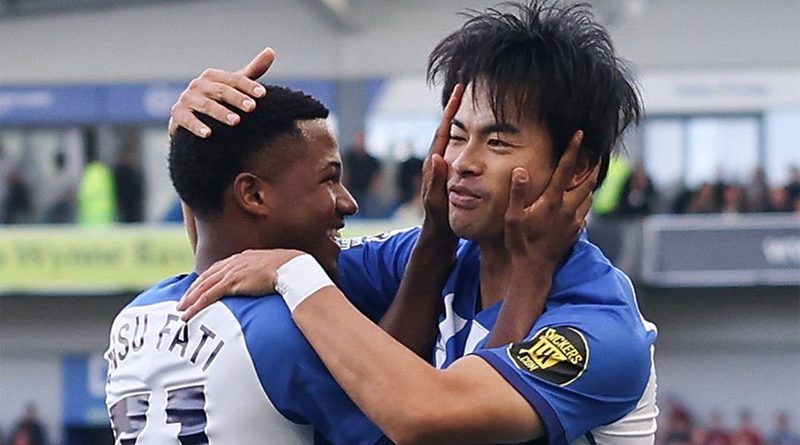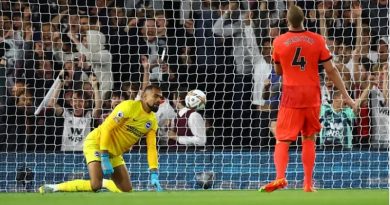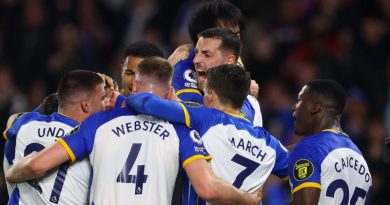Would Barcelona and Brighton swap Ansu Fati and Kaoru Mitoma?
It is a nasty surprise, when you accidentally have an acid table in your breakfast granola. Or at least that is what I thought the other day, when the morning rumour mill revealed Barcelona were considering offering Brighton a swap deal involving Ansu Fati and Kaoru Mitoma.
There are so many reasons as to why this screams nonsense. Money. Injury records. The status of the respective players within their clubs.
But then again, stranger things have happened. Like the Albion signing one of the most highly-rated young players on the planet with a €1 billion release clause in his contract in the first place.
The Seagulls successfully swooping for Fati was so unexpected as to initially appear another accidental acid tablet moment. Is him making a permanent move to the Amex with Mitoma heading the other way to Catalonia really that far fetched?
Money, money, money
Money makes the world go round and that is especially true of football. Looking from a financial perspective and you can see why Barcelona want a deal to happen, at the same time as why it seems implausible.
Barcelona have suffered from well-publicised money problems in recent seasons. It is why they and Real Madrid are so desperate for a European Super League, offering riches vastly in excess of what they receive from La Liga.
Anything Barca can do to reduce spending is therefore a good thing. And a swap deal involving Ansu Fati and Kaoru Mitoma would allow them to sign one of the world’s best wingers at a heavily subsidised cost.
Potential suitors wanting to buy Mitoma this summer would need to pay a lot of money. If Brighton can sell more defensive players who naturally attract lesser fees like Marc Cucurella and Moises Caicedo for such large sums, the mind boggles how much Tony Bloom will try and extract for an attacking player as exciting as Mitoma.
£100 million maybe? You have to go back to the summer of 2018 to find the last time Barca paid more than £70 million for a player, Antonine Griezmann from Atletico Madrid. As ridiculous as it sounds given the histories of the clubs, Barcelona cannot afford a straight buy from Brighton.
Which is where Fati comes in. Albion fans (ourselves included) all love trumpeting the €1 billion release clause thing, but the real reason that is there is because every player registered with La Liga must have said clause in their contract.
They are therefore often astronomically high due to an unfeasible figure being plucked from thin air. Pedri and Karim Benzema had release clauses in excess of €1 billion. If Colin Hawkins played in La Liga, he could easily have a release clause of €750 million. You get the picture.
Whilst player values on the Transfermarkt website are made-up bollocks similar to La Liga release clauses, they currently have Mitoma’s worth at £50 million and Fati at £30 million.
Using those figures as a base, it is easy to see why a swap deal involving Fati and Mitoma holds appeal for Barcelona.
Offering Fati to the Albion could allow them to spend as little as £20 million to £30 million on Mitoma, proving extremely useful when it comes to their balance sheet and Financial Fair Play.
Ansu Fati’s monster wages
Allowing Fati to leave Barcelona would likely result in something of a backlash from fans. As a La Masia graduate hailed the Heir to Messi who set a glut of youngest player records when breaking into the Barca first team, he remains hugely popular with supporters.
We see this in the vast number of Barcelona fan media – from Twitter accounts to websites – who have taken an interest in Brighton this season.
Mitoma brings with him obvious commercial appeal, from being the face of Japanese airline ANA to the thousands of fans who have spent thousands of pounds flying to the Amex to see him in action for Brighton.
Fati though is known on an even grander scale, a name instantly recognisable by football supporters worldwide thanks to his Barca exploits.
Some of those fans might not have the financial might of Japanese fans who can afford to come to England and buy everything not nailed down in the club shop, but their number is greater than Mitoma’s loyal legion.
Such is the way of modern football that commercial interests will surely figure in any swap deal between Mitoma and Fati.
There was none of this when Brighton had to weigh up whether it was good business for Andy Arnott to join Colchester United in 1999 with Warren Aspinall coming the other way, one of the few examples of a player swap involving the Albion in the past 25 years.
And with presumably little in it between the two players commercially or in transfer value, the biggest barrier is likely to be Fati’s astronomical Barcelona wages.
It has been reported numerous times by various sources that Fati is enjoying life with Brighton. He likes working under Roberto De Zerbi, whose infectious personality convinced the winger to pull out of a loan move to Spurs and instead join the Albion in the first place.
Does Fati like it enough though to accept a significant reduction in his Barcelona wages, rumoured to be somewhere between £199,000 and £230,000 per week?
Brighton would struggle to match even the lower figure, let alone the higher. They are said to contribute 70 percent as part of Fati’s loan deal, meaning the Albion are paying at least £140,000 per week.
Would Fati accept such a decrease to join Brighton permanently? Would Tony Bloom be willing to break the existing wage structure at the club and offer that amount on a permanent basis, rather than sanctioning for one-year only to temporarily land a talent like Fati?
If the Albion are serious about competing for European football every season, then at some point in the not-too-distant future they are going to have to make the jump to paying more in wages. The chance to make Fati a full-time Seagull could provide a reason to do it.
Would swapping Mitoma for Fati be a good football decision?
Forgetting the financials and looking at a potential Mitoma for Fati swap deal from a footballing perspective and it becomes even harder to make a decision.
Mitoma is approaching the peak of his powers aged 26 and until injury in the 1-1 draw at Crystal Palace, has proven remarkably robust in barely missing a game in 18 months between joining Brighton in the summer of 2022 and Christmas 2023.
That injury was a result of impact rather than a muscular problem. He has proven himself one of the most robust players in the Albion squad through the heavy fixture list of the end of last season and the autumn of the current campaign.
And Mitoma’s numbers obviously speak for themselves. 65 Brighton appearances, 13 goals and 14 assists. When he is in full flight, putting his dribbling thesis to good use by ghosting past players, cutting inside from the left and looking to score, he is genuinely unplayable.
In a system and style like DeZerbiBall which relies on fast, direct wingers, Mitoma is one of the central pillars of the Seagulls success.
Fati in contrast has only just turned 21. The potential he has is frightening. In three to four years time, he could easily be a more dangerous and effective player than Mitoma is right now.
De Zerbi has taken an ultra-cautious approach with Fati. But his returns when he has made it onto the pitch have been impressive.
In a little over 317 Premier League minutes – the equivalent of around three-and-a-half full matches – Fati has contributed two goals, eight on target shots and five big chances.
De Zerbi has been more willing to use Fati in the Europa League. He started the Albion’s first four group games, providing two goals and one assist.
Alongside greater long-term potential and therefore possible future resale value, Fati is more versatile than Mitoma. He burst onto the scene at Barcelona as a left winger, hence the comparisons to a young Messi.
Like Messi, it was always assumed that Fati would move centrally as his career progressed to play as a number 10. De Zerbi has used Fati in both those roles so far, as well as having him lead the line as a false nine.
The elephant in the room comes with Fati’s injury record. A meniscus tear in 2020 put him on the shelf for nine months and the feeling at Barcelona was that he never truly recovered from it, with a succession of other injuries following since.
Meniscus tears are known for leading to all sorts of future problems. In the case of the unfortunate Jose Izquierdo, it caused his early retirement from football.
Is Fati doomed to suffer from regular injuries throughout his career now? He has missed a little over two months of the current campaign with a muscle injury picked up in his second Premier League start at Nottingham Forest.
English football is more physical than La Liga. Is Fati robust enough to cope with it? Does De Zerbi share those concerns, explaining why he has been happy to use Fati regularly in Europe but less so in domestic competition?
Swapping a proven Premier League performer like Mitoma for a young but very talented individual with question marks over his fitness in Fati would represent a gamble by Brighton.
There are so many factors to consider when deciding whether it is a gamble worth taking, that I am glad not to be the decision maker.
Back to the acid tablets for breakfast instead.




